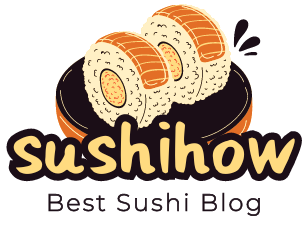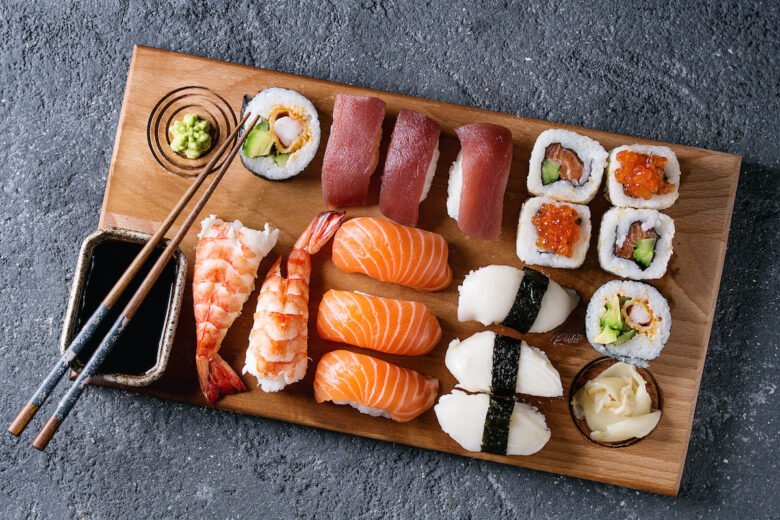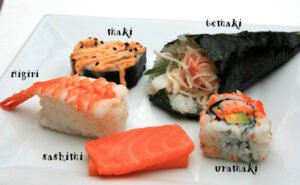No matter if you are new to sushi or an expert chef, the range of seafood and rice combinations available to you can be astounding. From simple nigiri to complex maki rolls, this article will introduce the many types of sushi.
Nigiri combines hand-pressed pillows of vinegared rice with one piece of raw fish to form this elegant Japanese cuisine dish, filling a gap between sashimi and what Westerners commonly refer to as sushi rolls (maki). Add uni for an exquisite flavor in this delicate dish!
Gunkan
Gunkan (also referred to as gunkanmaki) is a variation on traditional sushi that features rice topped with fish roe and other toppings and held together with seaweed strips. Common examples include salmon or flying fish roe; other options may include crab meat or uni (sea urchin).
Gunkan sushi combines elements from both temakizushi and nigiri sushi into one delicious bite-sized mound of hand-formed rice that’s then topped with ingredients held together with nori strips, creating an ideal vehicle for delicate or creamy toppings such as fish roe or uni that might otherwise fall off traditional nigiri sushi plates.
Kyubei restaurant’s sushi chef created gunkan sushi in 1941 in response to serving too-loose toppings like salmon roe. To remedy the situation, he wrapped a strip of nori around an irregular, hand-formed mound of rice to mimic its shape as a battleship or ship – thus producing what became known as gunkan sushi today.
gunkan sushi offers an abundance of flavors and textures. Some popular variations include pairing colorful, crunchy ikura and tobiko with rich toro tuna (toro). Others may add minced green onion or fly fish roe for additional depth of flavor.
Temari
Temari (hand balls) sushi is an approachable type of sushi designed for hand consumption, featuring colorful edible toppings in their sphere-shaped bodies and decorated with fun decorations inspired by Japanese handball toys with vibrant hues and intricate patterns reminiscent of their decorative Japanese handball toys. Given as gifts on special occasions as symbols of friendship and loyalty.
Temari sushi differs from its cousin in that it does not feature raw fish and can be customized to your own personal preferences by choosing from an array of ingredients that suit you. Use anything from shrimp and salmon, to crabmeat, octopus, chicken or even duck as your filling if raw seafood isn’t your cup of tea; vegetarians may enjoy making Temari with cucumber, radish and herb combinations like watercress or chives; translucent ingredients like super thinly sliced cucumber and translucent sea bream add an interesting sheen that enhances presentation – add extra sparkle!
Acquiring Temari artist skills takes years of training. As it is an ancient art that demands extensive knowledge of traditional patterns and techniques, its skills must be passed from generation to generation without fail – until recently only a small handful of female artisans could produce edible works of art that met all standards of quality.
Oshizushi
People tend to associate sushi with nigiri sushi – composed of raw fish atop a hand-shaped mound of vinegared rice – when thinking of this Japanese cuisine. But there are many other forms of sushi you should try in order to broaden your palette and discover exciting new tastes and experiences.
Oshizushi, or “pressed sushi”, is prepared by layering various ingredients on top of sushi rice in a square wooden box and pressing it with weight, yielding a more compact stack with distinct flavor and texture. This centuries-old tradition boasts an intricate cultural legacy.
Battera Oshizushi from Nara is perhaps best-known. This dish consists of Konosirus punctatus fish topped with sushi rice and seaweed for visibility; other regions also create their own varieties, such as Niigata and Nagano prefectures’ Sasazushi offering wild vegetables on top of sushi rice as an example.
Futomaki, which is similar to oshizushi but larger and typically made with cooked seafood or vegetable fillings, can also be made for bento boxes for lunch, picnics or parties – and individual serving sizes also make great takeout food items! Futomakis should feature perfect balance between layers of rice, fish or vegetable and wrapping that form beautiful packages that look as delicious as they taste. Futomaki is often considered one of the staple items at these events!
Nigiri
Nigiri sushi (nigirizushi) is the purest form of this cuisine. Composed of hand-pressed rice cylinders topped with slices of raw fresh fish, this traditional style dish is immensely popular among newcomers to this form of eating and those who appreciate its subtle flavors.
Skilled sushi chefs expertly craft small mounds of sushi rice before carefully layering fresh fish on top, often secured with seaweed strips. This creates an irresistibly delicious bite-sized delight, featuring both subtle sweetness and umami richness of both rice and fish; further enhanced with soy sauce or wasabi dip.
Tuna nigiri is an iconic sushi selection, and sushi restaurants typically specialize in creating different varieties by using various parts of a single tuna such as toro (fatty tuna belly), akami (lean tuna loin) and hamachi (yellowtail). Other popular nigiri options include salmon, shrimp scallops and even imitation crab!
Sushi lovers who do not prefer eating fish have many nigiri variations to choose from, including cooked tamago (cooked egg), octopus, and sea urchin. There are even options specifically tailored for vegetarians with an assortment of vegetables and tofu!



